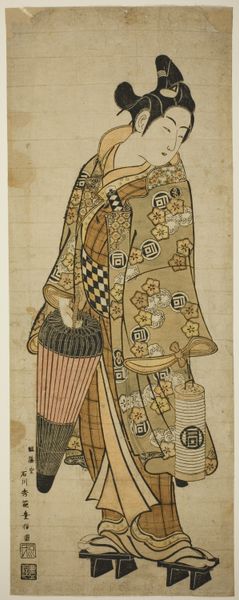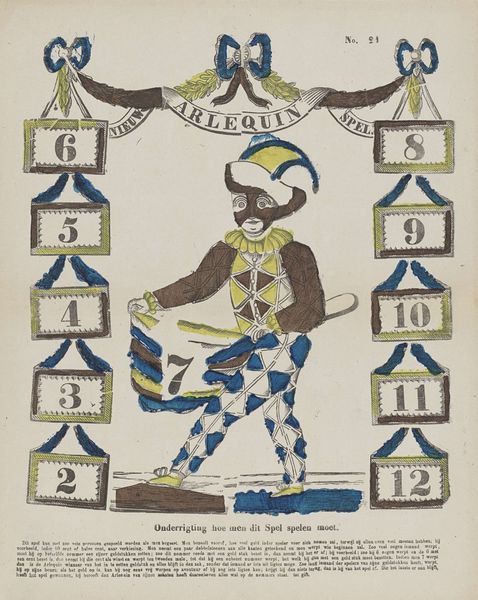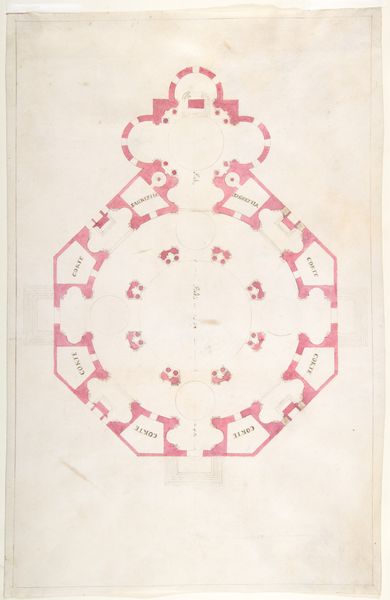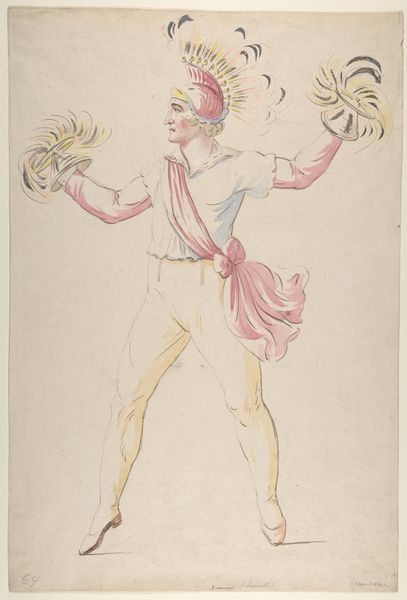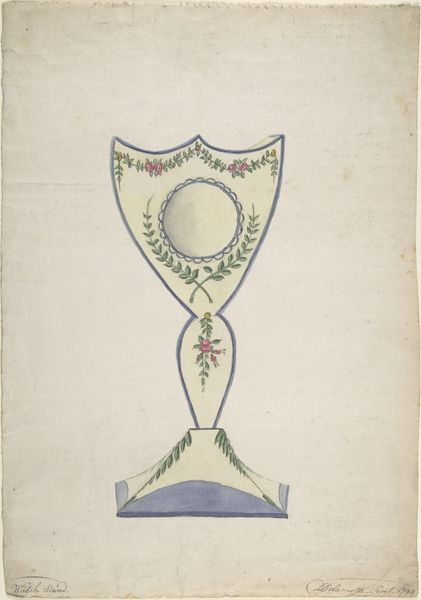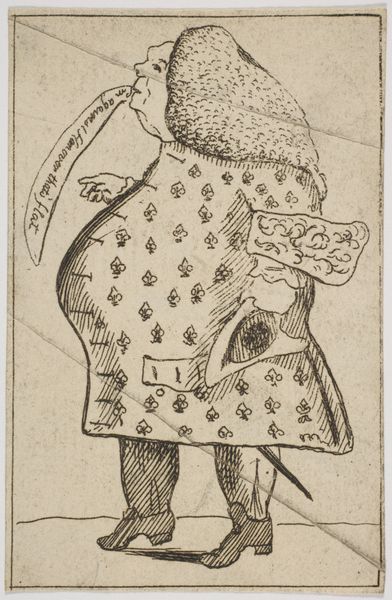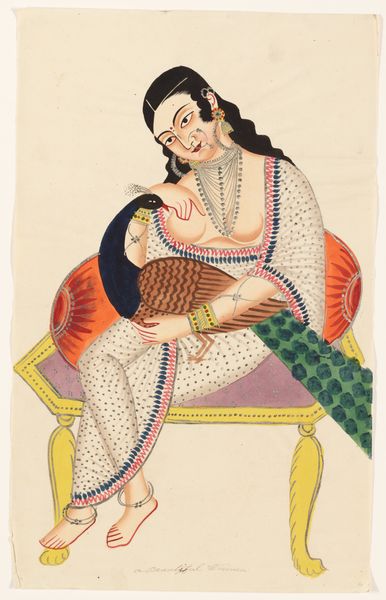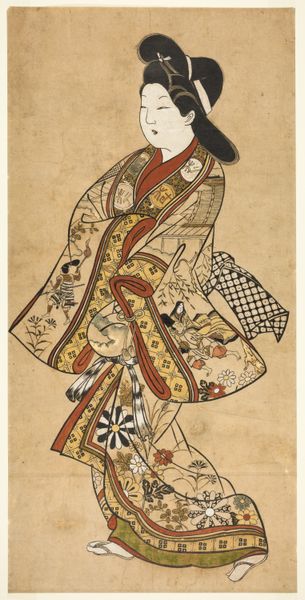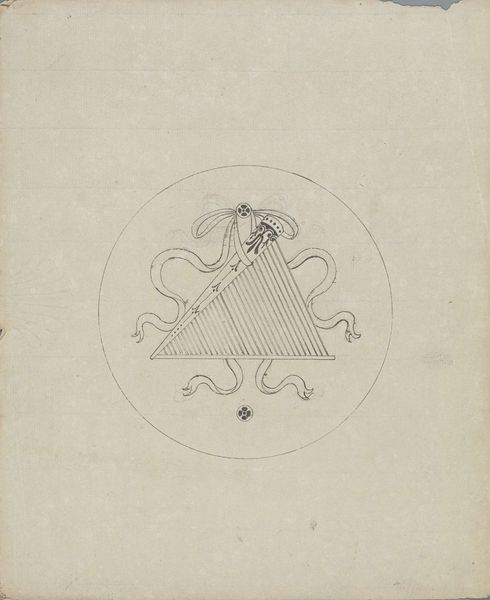
drawing, coloured-pencil, watercolor
#
drawing
#
coloured-pencil
#
caricature
#
watercolor
#
coloured pencil
#
watercolour illustration
#
genre-painting
#
miniature
Dimensions: height 345 mm, width 480 mm
Copyright: Rijks Museum: Open Domain
This print, “Arlequin's Lotto-spel,” was made by N. de Vries around the late 18th century. The work immediately draws your eye to the figure’s unusual costume, a visual field filled with numbered and lettered diamond shapes, set against a muted red background. De Vries uses the harlequin figure—a character traditionally associated with comedy and theatre—as a structural framework, transforming his body into a playing board. This disrupts the conventional roles of the harlequin, turning him from a performer into a mere object of chance. Notice how the artist plays with the tension between the figure's human form and the geometric abstraction imposed upon it. The arrangement of the diamond shapes is not random; it's a deliberate composition that challenges our expectations of the human body. This reconfiguration destabilizes the notion of a fixed, coherent identity, suggesting instead that identity can be fragmented and reassembled. The numbered diamonds create a sense of chance and contingency, reflecting the unpredictability of life itself. Art then is a way to destabilize accepted conventions, prompting us to question what we consider to be natural or fixed.
Comments
No comments
Be the first to comment and join the conversation on the ultimate creative platform.
